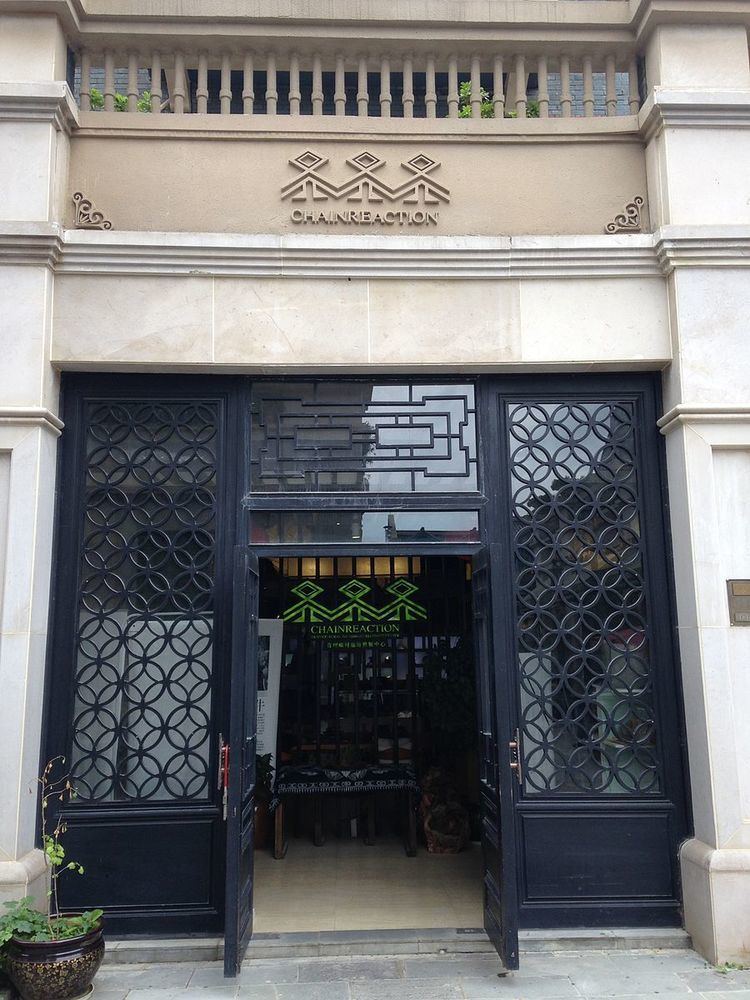Type Nonprofit organization | ||
 | ||
Key people Dean Zhang Xiaosong, Guizhou Normal University, School of International Tourism and Culture Affiliations Chain Reaction NGOTime Town Guizhou | ||
The Guizhou Rural Tourism Development Center (贵州乡村旅游发展中心) was founded in 2006 and was then approved by the Guizhou People's Congress as a non-profit organization. It is devoted to preserving, protecting and developing the diverse culture and non-material heritage of ethnic minority groups in southwest China, particularly their beautiful handicraft art.
Contents
History
The Guizhou Rural Tourism Development Center was founded by Zhang Xiaosong (张晓松) in 2006. Zhang Xiaosong is the Dean of Guizhou Normal University's School of International Tourism and Culture and one of the World Tourism Organization's seven international experts. The center was originally located at Guizhou Normal University, but then opened shop in Time Town Guizhou (时光贵州) in 2014, a tourism business center located in Qingzhen City, half an hour outside of Guiyang.
Cultural Themes
The Chinese sweet gum tree gave birth to Mother Butterfly, who then fell in love with Water Droplets. The two of them had twelve eggs, though Mother Butterfly could not properly take care of them. She then called upon Fortune Chicken to help brood them. After Fortune Chicken brooded over them for forty nine days the eggs hatched and out came a dragon, snake, tiger, water buffalo, centipede, thunder and the founder of the Miao people, Chi You. As such, the Miao people highly venerate Mother Butterfly as their founder and use her symbolic image in many of their handicrafts.
Seven Types of Art
Zhang Chunfeng
Zhang Chunfeng (张春风) specializes in making different types of wood carvings. In light of the environmental hazards associated with root carvings, He has pioneered the development of branch carving. Below is an article he wrote on the subject:
The Recovery of Life
"Tree branches serve as the basis for this new style of wood carving which seeks to create art from such objects. Tree stumps, damaged branches and dead tree trunks are also used as material.
Branch carving is a relatively new development and you would be hard-pressed to find examples of it among other forms of wood art.
Branch carving represents a transformation from death to life. This style of art uses material that has been abandoned as trash, that has been discarded by large trees and that has ultimately decayed and died. Mother nature has endowed these branches with life-reflecting inspiration, as evidenced through their many different forms and shapes. The artist draws upon his own perceptions of nature and humanity, combined with the inherent inspiration within the branches themselves, to endow the branch carving with additional artistic vitality. Branch carving regenerates that which was rotten, leading to the recovery of life.
Reflecting not only nature's inspiration, branch carving also serves as a portrait representing humanity's spirit and essence. As we utilize our creativity and look more intently we will discover that even rotten and decayed objects have magnificent beauty and life.
Every branch carving is individually unique, specially designed in accordance with nature's endowment of inspiration. The artist does not dare add any additional color or subjective fabrication to his carvings, but takes care to follow closely nature's special endowment given to each branch.
Branch carving preserves the essence of wood carving while imbuing its product with new life. In addition, this art form is environmentally friendly and does not entail the mass destruction of rare trees as it strives to follow the laws of nature."
(Translated from Mandarin Chinese to English)
Yang Eryeniu
Yang Eryeniu (杨二耶牛) is commonly referred to as Yang Laoshi (Teacher Yang) and she specializes in making batik art. She is a member of the Miao ethnic minority group and her art and dress reflects her cultural heritage. Each of her artistic products is unique as she draws upon her own experiences and Miao folklore for inspiration in producing beautiful pieces of batik art.
Outreach Initiatives
"For Our Daughters—Preserve and Protect Guizhou Minority Women Handicraft Art Program"
